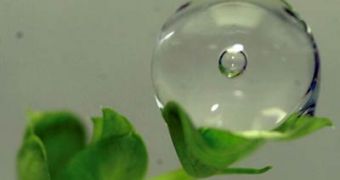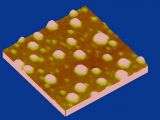Physicists observed nanoscale bubbles of air forming in water for the first time in 2001. The only problem is these bubbles were not supposed to exist. Still, they continue to contradict the laws of physics and pop up unexpectedly.
Air can form bubbles in water and these can last for a long time until breaking. The problem is that on the nanoscale, the overwhelming force of surface tension should prevent the bubbles from ever forming.
A new paper published in the Physical Review Letters further deepens the thrill by showing that newly reported nanobubbles can withstand shock waves exerting wide swings in pressure, a sign of what they call superstability.
This discovery may not solve the mystery, but it may help other researchers take advantage of the strange properties of nanobubbles and incorporate them in various nanotechnology applications, like shielding mechanisms for delicate machinery in future biochemical devices.
Thus, they could use the fact that the same surface tension that should blow the bubbles apart also keeps a submerged air bubble as round as possible, much like water forms beads on a hydrophobic surface.
Surface tension pushes in on the bubble and the smaller the bubble, the higher the air pressure inside the bubble must be to keep it from collapsing. If we take a 100-nanometer-diameter bubble, the pressure surrounding it should theoretically be at least five times that of the atmosphere, so it should force the gas to dissolve into the surrounding liquid.
The fact that it doesn't could be useful, since the ability to create these bubbles on demand could mean a reduced friction inside nanoscale devices or to reduce blood cloths, or even using them as computer memory structures.
It seems that no matter where surface tensions play a part, there could be a place for these resilient and apparently unbreakable bubbles, which continue to defy the laws of both macroscopic and nanoscopic physics as we know it.

 14 DAY TRIAL //
14 DAY TRIAL // 
